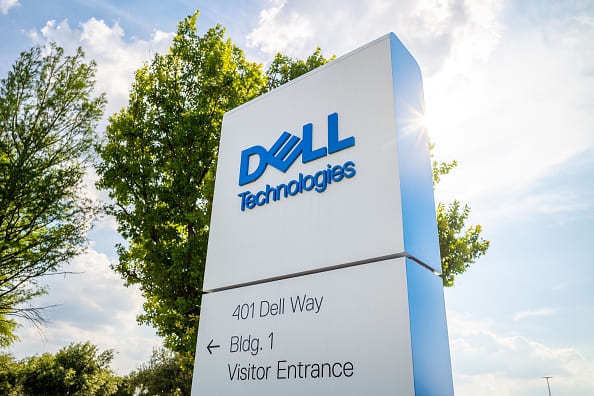
The rapid advancement of artificial intelligence (AI) technology has triggered profound shifts across various industries, reshaping how companies operate and compete. Among the enterprises seizing this transformative wave is Dell Technologies, which has emerged as a prominent player by aligning its infrastructure offerings with burgeoning AI demands. As AI workloads become increasingly sophisticated, the technology ecosystem is witnessing a corresponding surge in demand for specialized hardware, notably AI-optimized servers, a sector where Dell has made significant inroads.
Dell’s recent financial trajectory vividly illustrates how AI-related demand serves as a driving force behind its operational and market success. The company’s server business, particularly strengthened by the integration of powerful Nvidia GPUs, has become central to its growth story. Nvidia’s advanced chips provide the computational power necessary for modern AI applications such as machine learning and data analytics, enabling Dell to cater effectively to this niche yet rapidly expanding market. This collaboration has not only deepened Dell’s competitive foothold but also facilitated the securing of substantial AI-oriented contracts, with recent reports indicating a backlog exceeding $10 billion. Dell’s infrastructure solutions segment has thus reaped considerable benefits from global investments into AI, underpinning optimistic revenue forecasts and profit outlook revisions.
The financial markets have responded positively to Dell’s AI-driven momentum, reflected in notable surges of up to 10% in share prices following earnings announcements exceeding expectations. Despite modest or occasionally subdued overall revenue growth, investors appear particularly buoyed by Dell’s ability to raise profit estimates amid these conditions. For instance, fiscal 2026 revenue projections sit between $101 billion and $105 billion, while adjusted earnings per share (EPS) estimates hover around $9.30 to $9.40, with recent upward revisions attributed largely to flourishing AI server sales. This financial performance underscores the strong investor confidence Dell commands as it positions itself at the intersection of traditional IT hardware and cutting-edge AI infrastructure provision.
However, the AI boom surfaces challenges that complicate the otherwise promising outlook. The escalating production costs associated with manufacturing AI servers—driven by the need for specialized components and complex build processes—have exerted downward pressure on profit margins. Dell’s forecasts for adjusted gross margins have thus been revised downward, signaling the cost-intensive nature of this growth avenue. Compounding this issue is the softer demand in Dell’s traditional PC segment, highlighting a mixed operational landscape where AI server sales must compensate for slowdown elsewhere. Investors have reacted with a degree of caution, as evidenced by episodes of significant share price volatility, including a notable 17% drop linked to lowered quarterly profit forecasts. This volatility reflects the tension between robust AI-driven revenue prospects and eroding margins from heightened production expenses.
From a broader perspective, Dell’s current standing exemplifies the tempered expectations surrounding AI’s long-term market impact. While AI-related revenue streams show impressive growth, some analysts view Dell’s overall forecasted revenue growth—estimated at a compound annual growth rate of 3% to 4%—as conservative against the backdrop of widespread AI exuberance. This suggests Dell is prioritizing steady, sustainable expansion rather than chasing speculative spikes, a strategy indicative of legacy technology firms navigating new frontiers cautiously. Balancing rapid innovation and prudent financial management, Dell illustrates how established hardware vendors can adapt their business models to remain relevant amid disruptive technological evolution.
In essence, Dell Technologies’ journey highlights the complicated dance between opportunity and challenge that defines the AI era. The company’s rising stock performance and enhanced profit outlook underscore strong demand for AI-optimized servers, made possible through its strategic partnership with Nvidia. Yet, margin compression and uneven segment dynamics temper unreserved enthusiasm. Looking ahead, Dell’s ability to innovate and leverage partnerships will likely determine its capacity to transform from a traditional hardware stalwart into a dominant leader in AI infrastructure. As AI continues expanding its footprint across industries, Dell’s evolving approach may serve as a bellwether for how incumbent technology manufacturers can thrive amid this technological revolution.
